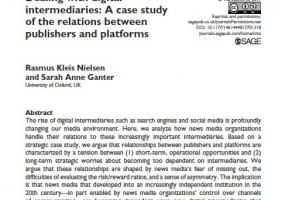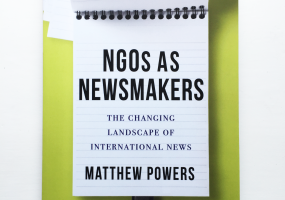News, advertising, and what’s next for the Snapchat generation?
26 Jul 2016
The event was entitled ‘News after advertising’, but if there was anything that the audience took away from Sir Martin Sorrell’s introductory talk it was that the advertising industry is still alive and kicking: WPP is buying $73 billion annually on behalf of its clients. Having said that, the media landscape has changed and is continuing to change, with knock-on effects on advertising, journalism, and publishing. That day 13pc had been knocked off the Daily Mail publisher’s share price, after a steep decline in print advertising and a drop in print sales revenue. The Telegraph Group is cutting costs, also thanks to a downturn in print advertising; and the first daily newspaper to be launched in the UK for 30 years, The New Day, folded after three months. But it’s not just the old guard that appears to be in trouble: Buzzfeed missed its targets in 2015 and has cut its 2016 forecast by half; Mashable announced staff layoffs at the beginning of April. Is it, as popular wisdom suggests, that young people – the ‘Snapchat generation’ – are just not interested in news? Sir Martin thinks they are, but that they want it to be presented in a totally different way – and that’s not necessarily with clickbait headlines and vapid content. Vice, he thought, has ‘got it’, but it’s one of very few. Or is it that in an era of low GDP growth and little or no inflation, there is an increased focus on costs, with procurement departments engaged in a race to the bottom as far as pricing is concerned? An intriguing slide, from Mary Meeker’s Internet Trends Report, compared the ‘time spent’ (as a percentage of total media consumption) on each medium with the advertising spend. What was clear was that print was ‘over-indexed relative to time spent’ and that there was a massive opportunity in mobile, though Sir Martin believed that the industry had not yet ‘figured out the best ways of putting creative on mobile.’ But this was not the whole story, he said, as ‘time spent’ does not equate to ‘engagement’. On Facebook, a video ‘view’ is defined as watching three seconds, and half the time people watch with the sound turned off. Engagement in fact is much stronger in newspapers and television than on most of the social media platforms. The panel discussion, chaired by Alan Rusbridger and featuring Simon Fox (CEO, Trinity Mirror) and David Abraham (CEO, Channel 4) focused on what this meant for the future of news and journalism. Simon Fox said that news publishers were used to hearing that they were all ‘doomed’. He pointed out, however, that the ‘legacy’ news brands were actually doing rather well – better than start-ups – and attracting advertising. True, The New Day had not lasted long, but Fox was sanguine, insisting that it was important to try things and fail fast – or, as he corrected himself, learn fast. Consumer research had suggested that there was (and continues to be) a high level of dissatisfaction with certain existing news brands – they were seen as biased and unrelentingly negative. Perhaps The New Day was not the answer, but there is still a gap to be filled. It was interesting that both representatives of the ‘legacy brands’ continued to demonstrate a deep commitment to the principles of serious or ‘proper’ journalism, while acknowledging that it can be delivered in different ways, through aggregating platforms and other new channels. Sir Martin, however, while defending the seriousness of the younger generation, was all for throwing out the past and starting afresh. David Abraham discussed journalism as a product, but also as a part of culture and democracy. ‘Proper’ journalism helps to tell citizens what’s really going on, and involves investigations and sticking with stories. For example, the recent Channel 4 News investigation into election expenses questions the electoral legitimacy of the current government. It’s an important story, but almost certainly could not come from a profit-maximising model. Fox agreed that the journalism came first: ‘Our job is to create compelling, distinctive, relevant content, and then monetise it.’ It’s all about the kind of society we want to live in, and how we create an independent media that can operate separately from the state. Channel 4’s non-for-profit, social enterprise model enables it to innovate technically and economically, while pursuing a useful role in society. Abraham agreed that Vice had created a good model, but said that it was not yet putting resources into serious journalism that the world needs. Sir Martin, however, considered that Fox and Abraham were clinging to a very ‘conventional view’ of what constitutes investigative journalism, saying that social media made it possible to ‘crowdsource’ these stories. Abraham reminded him that there are broadcasting codes, within an eco-system that is designed to deliver public value, truthfulness, accuracy, and impartiality. Both he and Fox were perfectly comfortable with the idea of readers accessing their content through Facebook as it was part of increasing ‘reach’. ‘We believe that news should be consumed wherever readers want to find it … we embrace the notion of distributed content.’ But it was clear that, for them, news came before advertising.




